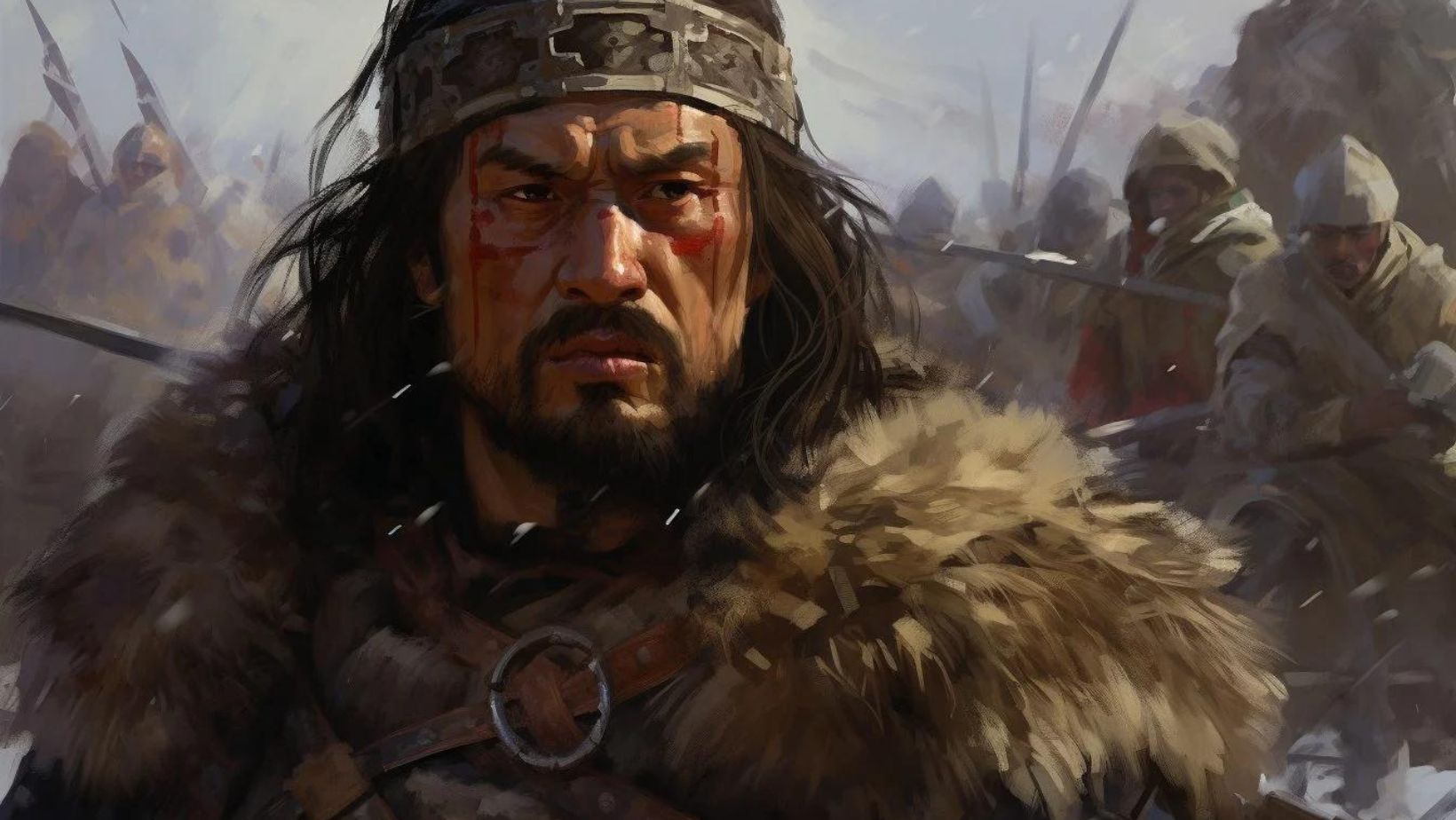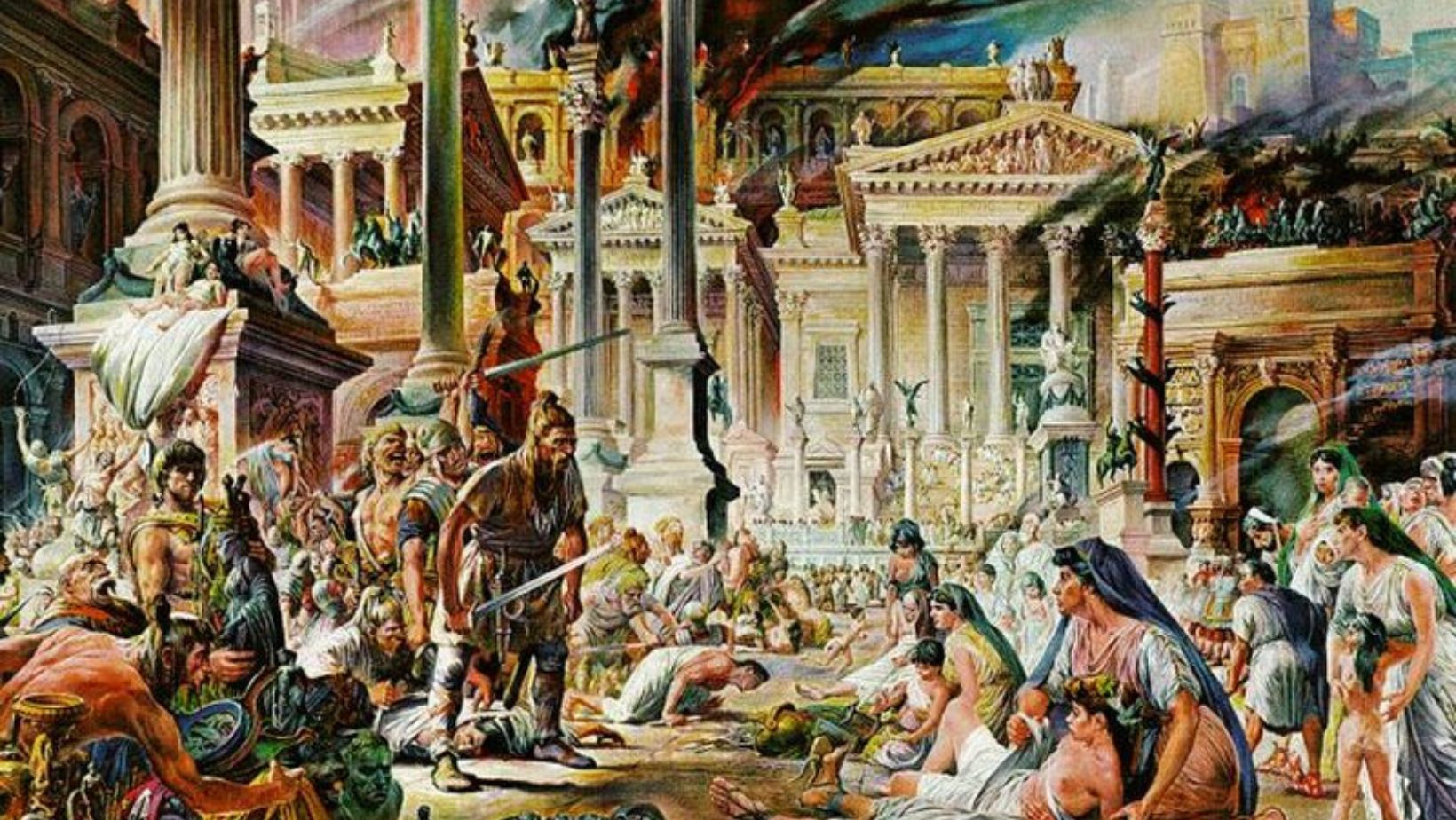Attila the Hun’s Relationship with Gothic Tribes – the mere mention of his name conjures up images of a fierce warrior, a relentless leader who struck fear into the hearts of his enemies. But his story is so much more than that, especially when it comes to his relationship with Gothic tribes.
I want to take you on a journey through the complex web of alliances, betrayals, and battles that defined Attila’s interactions with the Goths. It’s a tale of power, politics, and the struggle for survival in a turbulent era.
Ready to uncover the secrets of this fascinating chapter in history? Let’s dive in!
Table of Contents:
- Attila the Hun’s Early Encounters with Gothic Tribes
- Attila’s Rise to Power and Relationship with the Goths
- The Battle of the Catalaunian Plains
- Attila’s Invasion of Italy and Interactions with the Goths
- The Collapse of the Hun Empire and Gothic Succession
- Conclusion
Attila the Hun’s Early Encounters with Gothic Tribes: Attila the Hun’s Relationship with Gothic Tribes

Some historians believe they may have descended from the Xiongnu, a confederation of nomadic tribes that dominated the eastern steppe in the 3rd century BC.
What we do know is that by the 4th century AD, the Huns had begun migrating westward from Central Asia, eventually reaching the Volga River region. This migration brought them into contact with various barbarian tribes, including the Gothic tribes that inhabited parts of eastern Europe.
Huns’ Potential Origins
The exact origins of the Huns remain a topic of debate among historians and archaeologists. One theory suggests that they may have been related to the Xiongnu, a powerful nomadic confederation that ruled the eastern steppe for centuries.
Huns’ Migration Westward: Attila the Hun’s Relationship with Gothic Tribes
As the Huns moved westward in the 4th century AD, they encountered various Gothic tribes that had settled in the region north of the Black Sea and along the Danube River. These included the Thervingi, a branch of the Goths that had established a kingdom in what is now Ukraine and Romania.
Many Goths chose the latter option, seeking refuge within the borders of the Roman Empire.
Initial Conflicts with Gothic Tribes
The first major conflict between the Huns and the Goths occurred around 376 AD, when the Huns attacked the Thervingi kingdom. Faced with the prospect of annihilation, the Thervingi appealed to the Roman Emperor Valens for permission to cross the Danube and settle within imperial territory.
Valens agreed, hoping to use the Goths as a buffer against further Hunnic incursions.
Attila’s Rise to Power and Relationship with the Goths: Attila the Hun’s Relationship with Gothic Tribes
In the early 5th century, the Huns were ruled by two brothers: Attila and Bleda. Together, they oversaw a period of rapid expansion and consolidation, as the Huns brought more and more of the surrounding tribes under their control.
This included many of the Gothic tribes that had once resisted Hunnic rule, such as the Ostrogoths and Visigoths.
Attila and Bleda’s Joint Rule
Attila and his brother Bleda came to power around 434 AD, following the death of their uncle Rugila. As joint rulers of the Hunnic Empire, they continued Rugila’s policy of extracting tribute from the Eastern Roman Empire while also expanding Hunnic control over the surrounding tribes.
During this period, Attila and Bleda had a complex relationship with the various Gothic tribes under their rule.
Attila’s Consolidation of Power
In 445 AD, Attila took a drastic step to consolidate his power over the Hunnic Empire. According to ancient sources, he murdered his brother Bleda during a hunting expedition, eliminating his only rival for the throne.
With Bleda out of the way, Attila was now the sole ruler of the Huns.
Attila’s Diplomatic Dealings with Gothic Tribes: Attila the Hun’s Relationship with Gothic Tribes
Despite his reputation as a ruthless conqueror, Attila was also a skilled diplomat who understood the value of alliances and political maneuvering. Throughout his reign, he engaged in complex negotiations with the various Gothic tribes under his control, seeking to play them off against each other and against the Romans.
He also sought to sow discord among the Visigoths themselves, backing rival claimants to the throne and encouraging internal strife.
At the same time, Attila was not above using threats and intimidation to keep the Goths in line.
In many ways, Attila’s relationship with the Gothic tribes was a microcosm of his larger political strategy.
Key Takeaway: Attila the Hun’s Relationship with Gothic Tribes
Attila’s rise saw a mix of conflict and diplomacy with Gothic tribes. He demanded tribute, used threats, but also formed strategic alliances to expand his power.
The Battle of the Catalaunian Plains: Attila the Hun’s Relationship with Gothic Tribes
In 451 AD, Attila the Hun invaded Gaul with a massive army, including allied Gothic tribes like the Gepids and Ostrogoths. This invasion would lead to one of the most significant battles in history: the Battle of the Catalaunian Plains.
Attila’s Invasion of Gaul
The Roman general Flavius Aetius and the Visigothic king Theodoric I led this alliance, determined to stop the Huns’ advance.
Attila’s Alliance with Gothic Tribes
To bolster his forces for the invasion of Gaul, Attila formed alliances with several Gothic tribes, most notably the Gepids and Ostrogoths. These alliances were crucial to Attila’s strategy, as they provided him with additional warriors and helped to sow discord among the various Gothic factions.
The Gepids, in particular, were valuable allies for Attila. By allying with the Gepids, Attila was able to exploit these tensions and weaken the unity of the Gothic tribes.
Outcome and Consequences of the Battle: Attila the Hun’s Relationship with Gothic Tribes
The Battle of the Catalaunian Plains was a massive and bloody affair, with tens of thousands of warriors on each side. The fighting lasted for hours, continuing well into the night, and resulted in heavy casualties for both the Huns and the Roman-Gothic alliance.
The Roman-Gothic alliance, led by Aetius and Theodoric, managed to hold their ground and force the Huns to retreat.
The consequences of the Battle of the Catalaunian Plains were far-reaching. It halted Attila’s invasion of Gaul and prevented him from conquering even more of Western Europe.
However, the battle was not without its costs.
Attila’s Invasion of Italy and Interactions with the Goths: Attila the Hun’s Relationship with Gothic Tribes
After his defeat at the Battle of the Catalaunian Plains, Attila the Hun turned his attention to Italy. In 452 AD, just one year after his failed invasion of Gaul, Attila led his army across the Alps and into the heartland of the Western Roman Empire.
Attila’s Motivations for Invading Italy
Attila’s decision to invade Italy was driven by a combination of factors. First and foremost, he sought to restore his reputation and prestige after the setback in Gaul.
Additionally, Italy was a tempting target due to its wealth and resources. The prosperous cities of northern Italy, such as Milan and Aquileia, were ripe for plunder. Attila also likely saw the invasion as an opportunity to further weaken the Western Roman Empire and expand his own power and influence.
Gothic Tribes’ Role in the Invasion
During Attila’s invasion of Italy, the Gothic tribes played a complex and varied role. Some, like the Ostrogoths, continued to support Attila and fought alongside the Huns.
However, other Gothic tribes, such as the Visigoths, remained allied with the Romans and helped to defend Italy against the Hunnic invasion. The Visigoths, led by their new king Thorismund, sought to protect their own interests and territories in the region.
This complex web of alliances and rivalries among the Gothic tribes added to the chaos and uncertainty of the invasion.
Attila’s Encounter with Pope Leo I: Attila the Hun’s Relationship with Gothic Tribes
One of the most famous episodes of Attila’s invasion of Italy was his encounter with Pope Leo I.
The details of what transpired during this meeting are uncertain, as the historical records are limited and often contradictory.
It is often seen as a testament to the power of faith and diplomacy in the face of military might.
The meeting also highlights the complex relationship between Attila and the religious authorities of the time.
Key Takeaway: Attila the Hun’s Relationship with Gothic Tribes
Attila the Hun invaded Gaul in 451 AD with a massive army, including Gothic tribes like the Gepids and Ostrogoths. Despite his strategic alliances, Attila faced a significant defeat at the Battle of Catalaunian Plains against Romans and Visigoths. This marked his first major setback but didn’t stop him from invading Italy next year.
The Collapse of the Hun Empire and Gothic Succession

The once-mighty Hun Empire fell apart after Attila’s death in 453 AD. This nomadic people had terrorized much of Europe for nearly a century, but without their fearsome leader, they quickly unraveled.
Attila’s death left a power vacuum that his sons struggled to fill. The Huns were no longer the unified force they had been under Attila’s rule.
Attila’s Death and Succession Struggle
Attila the Hun died unexpectedly on his wedding night in 453 AD, possibly from a nosebleed. His death sent shockwaves through the Hun Empire.
Attila’s sons, Ellac, Dengizich, and Ernakh, fought bitterly over who would succeed their father. This succession struggle weakened the Huns and left them vulnerable.
I’ve studied Attila the Hun’s relationship with Gothic tribes extensively. The Goths were one of the many groups that the Huns had subjugated during their reign of terror. With Attila gone, they saw an opportunity to break free.
Fragmentation of Hunnic Power
As Attila’s sons fought amongst themselves, the Hun Empire began to fragment. Subject peoples, including the Goths, rebelled against Hunnic rule.
The once-feared Huns were now divided and weakened. They could no longer maintain their grip on the vast territories they had conquered.
In my research, I’ve found that this fragmentation was a key factor in the collapse of the Hun Empire. Attila had held his empire together through sheer force of will and military might. Without him, it quickly fell apart.
Gothic Tribes as Successors to Huns
As the Hun Empire crumbled, Gothic tribes emerged as powerful successors in the region. The Ostrogoths and Gepids, once subject to Hunnic rule, established their own kingdoms.
These Gothic kingdoms would go on to play a major role in the political landscape of post-Roman Europe. They filled the power vacuum left by the Huns’ collapse.
I’ve always been fascinated by how quickly the balance of power can shift in history. Attila the Hun’s relationship with Gothic tribes is a prime example of this. In just a few short years, the Goths went from being subjugated by the Huns to being their successors.
The fall of the Huns and the rise of the Goths marked a major turning point in European history. It set the stage for the emergence of new powers in the centuries to come.
Key Takeaway: Attila the Hun’s Relationship with Gothic Tribes
Attila’s sudden death in 453 AD led to the rapid collapse of the Hun Empire. His sons’ power struggle weakened them, allowing Gothic tribes like the Ostrogoths and Gepids to rebel and establish their own kingdoms, filling the power vacuum left by Attila.
Conclusion: Attila the Hun’s Relationship with Gothic Tribes
Attila the Hun’s relationship with Gothic tribes was a complex tapestry of conflict, alliances, and power struggles. From the early clashes during the Huns’ westward migration to the epic Battle of Catalaunian Plains, these interactions shaped the course of history.
We’ve seen how Attila’s rise to power and his diplomatic maneuverings influenced his dealings with the Goths, and how the fall of the Hunnic Empire after his death led to the emergence of Gothic kingdoms.

